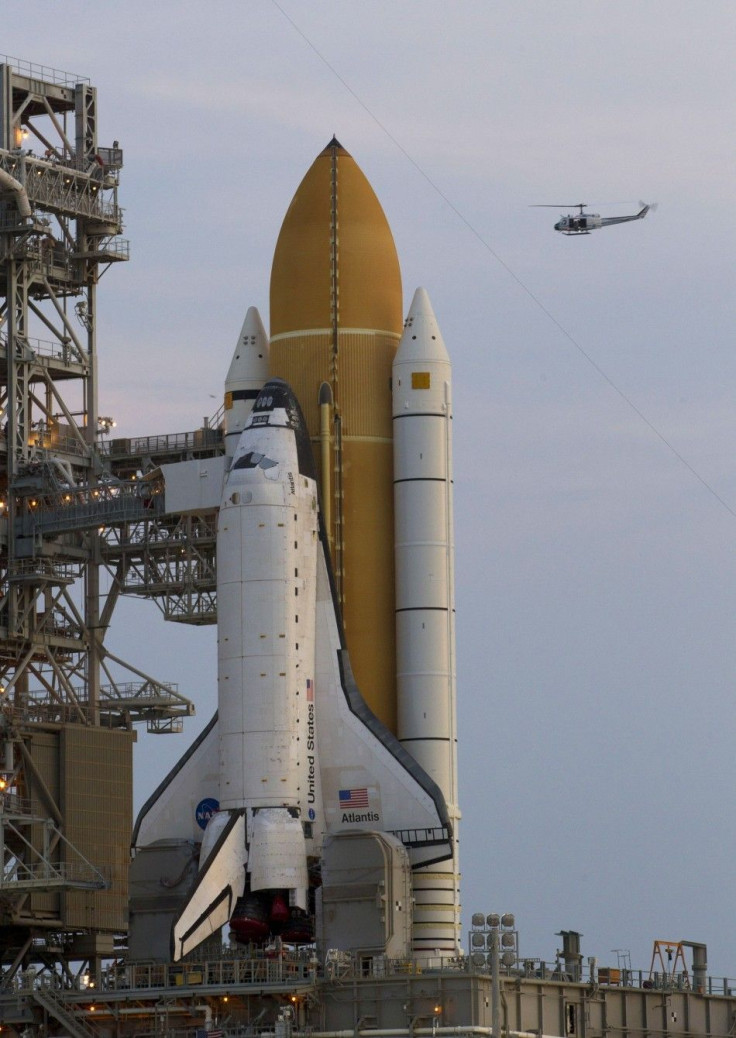Unfavorable Weather Threatens NASA’s Final Shuttle Launch

NASA space shuttle Atlantis is scheduled to blast off to the International Space Station at 11:26 am EDT on July 8, which will be the final flight in the 30-year shuttle program.
The countdown has officially begun for the final mission of the shuttle program, STS-135, a 12-day program to the International Space Station, on Tuesday.
But unfavorable weather conditions may delay shuttle Atlantis' launch attempt on Friday as there is a chance for showers and thunderstorms in and around the Kennedy Space Center Friday morning.
“I wish I had better weather for you, a better weather briefing for you. Right now, we're going with a 60 percent chance of KSC weather prohibiting launch due to the potential for showers and isolated thunderstorms in the area, said shuttle weather officer Kathy Winters, Fox News reported.
Atlantis, which flew its maiden voyage on October 3, 1985 on the STS-51-J mission, will carry a crew of four for its STS-135 mission: Commander Chris Ferguson, Pilot Doug Hurley, and Mission Specialists Sandy Magnus and Rex Walheim.
Meanwhile, the four astronauts arrived in two T-38 jets at NASA Kennedy Space Center's Shuttle Landing Facility at about 2:30 pm EDT on the fourth of July.
The crew spoke to media before being transported to the Astronaut Crew Quarters in Kennedy's Operations and Checkout Building, where they will spend the next few days training and spend time with family before liftoff.
I think I speak for the whole crew in that we are delighted to be here after a very arduous nine month training flow and we're thrilled to finally be here in Florida for launch week, Commander Chris Ferguson said.
The Atlantis crew is expected to face heavy workload as only four astronauts are assigned to the last mission of NASA whereas it's usually a six or seven-person crew.
The minimal crew is a safety precaution as they have to be ready to take shelter on the station for months, in the event that something goes wrong with their ride. The smaller crew ensures the astronauts wouldn't run out of food or other supplies while they wait to be evacuated to Earth.
In case the shuttle is too damaged to attempt landing, the astronauts will wait at the space station to be picked up by the smaller Russian Soyuz spacecraft, which would be used to fly the Atlantis astronauts home.
NASA has had a second shuttle on standby, since the 2003 Columbia accident, for a rescue mission if needed. However, Atlantis is the 135th and last shuttle to fly, with no backup shuttle in waiting as shuttles Endeavour and Discovery are already being dismantled in preparation for their next role as museum exhibits.
During the STS-135 mission, the shuttle will deliver the Robotic Refueling Mission (RRM) to the International Space Station. The RRM is an experiment designed to demonstrate and test the tools, technologies and techniques needed to robotically refuel satellites in space, even satellites not designed to be serviced.
The mission will also fly the Raffaello multi-purpose logistics module filled with supplies and spare parts to sustain the station's operations once the shuttles are retired, during STS-135, which is the last planned space shuttle mission since STS-1.
While coming back from the station, the crew will carry back the recently failed ammonia pump module for NASA to better understand the failure mechanism and improve pump designs for future systems.
The United States is ending the shuttle program to save its $4 billion annual operating costs and use it to develop spaceships that can travel beyond the station, such as to the moon, asteroids and eventually to Mars.
After the space shuttle ends, NASA will work with the Russian Space Agency to send astronauts into space through Russia's Soyuz space shuttles. Following that, NASA plans on helping launch privately run space shuttle programs.
© Copyright IBTimes 2024. All rights reserved.





















